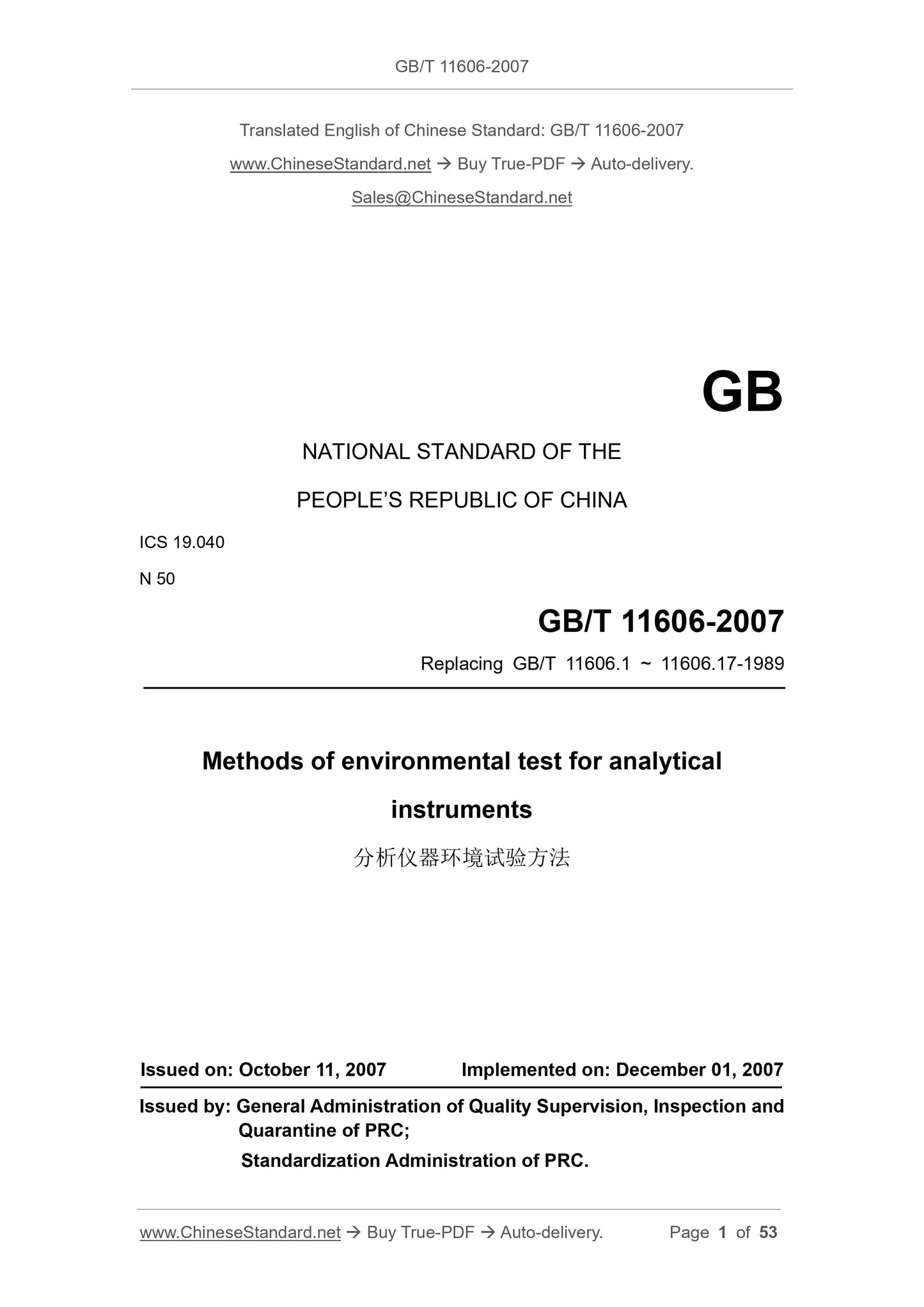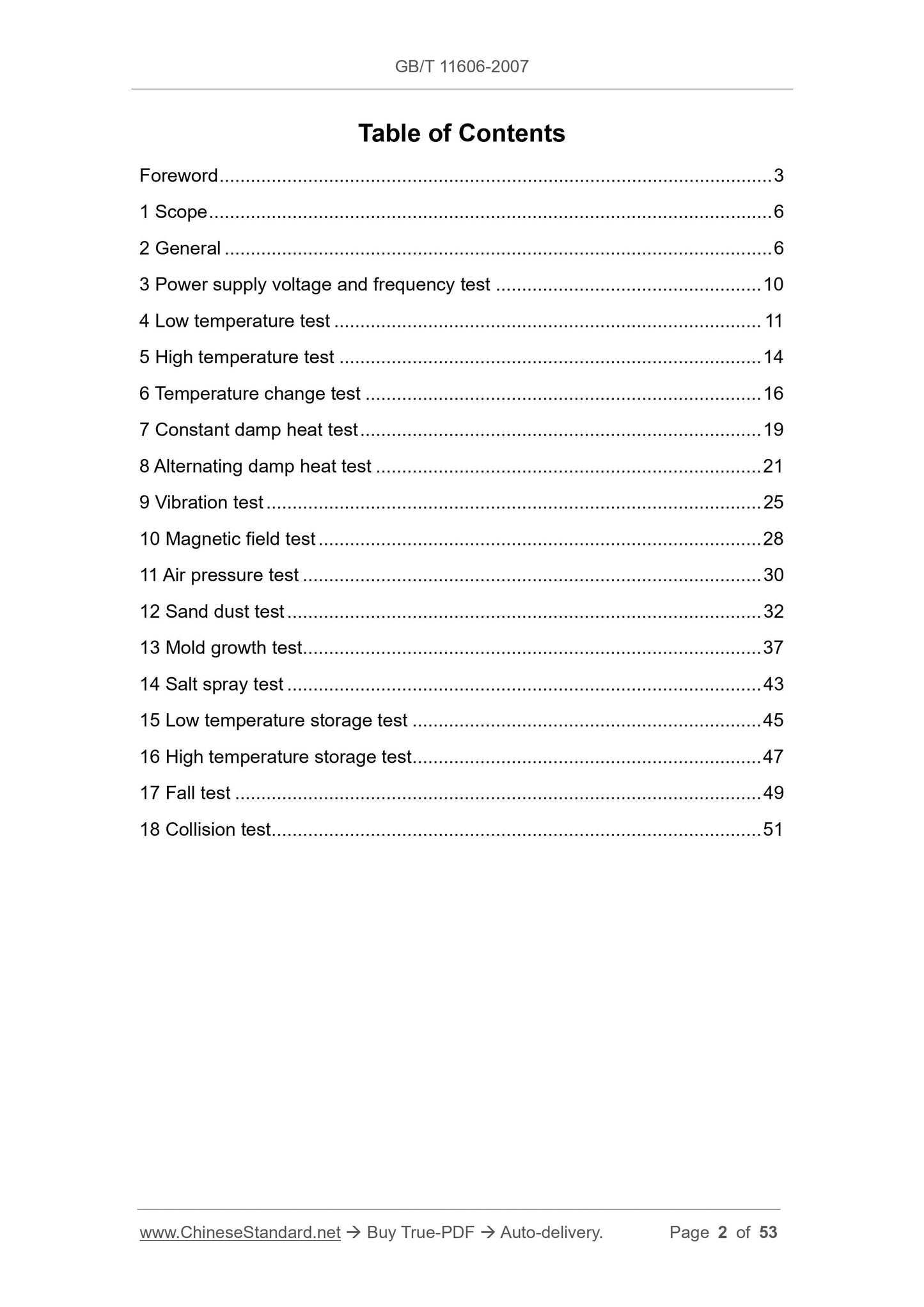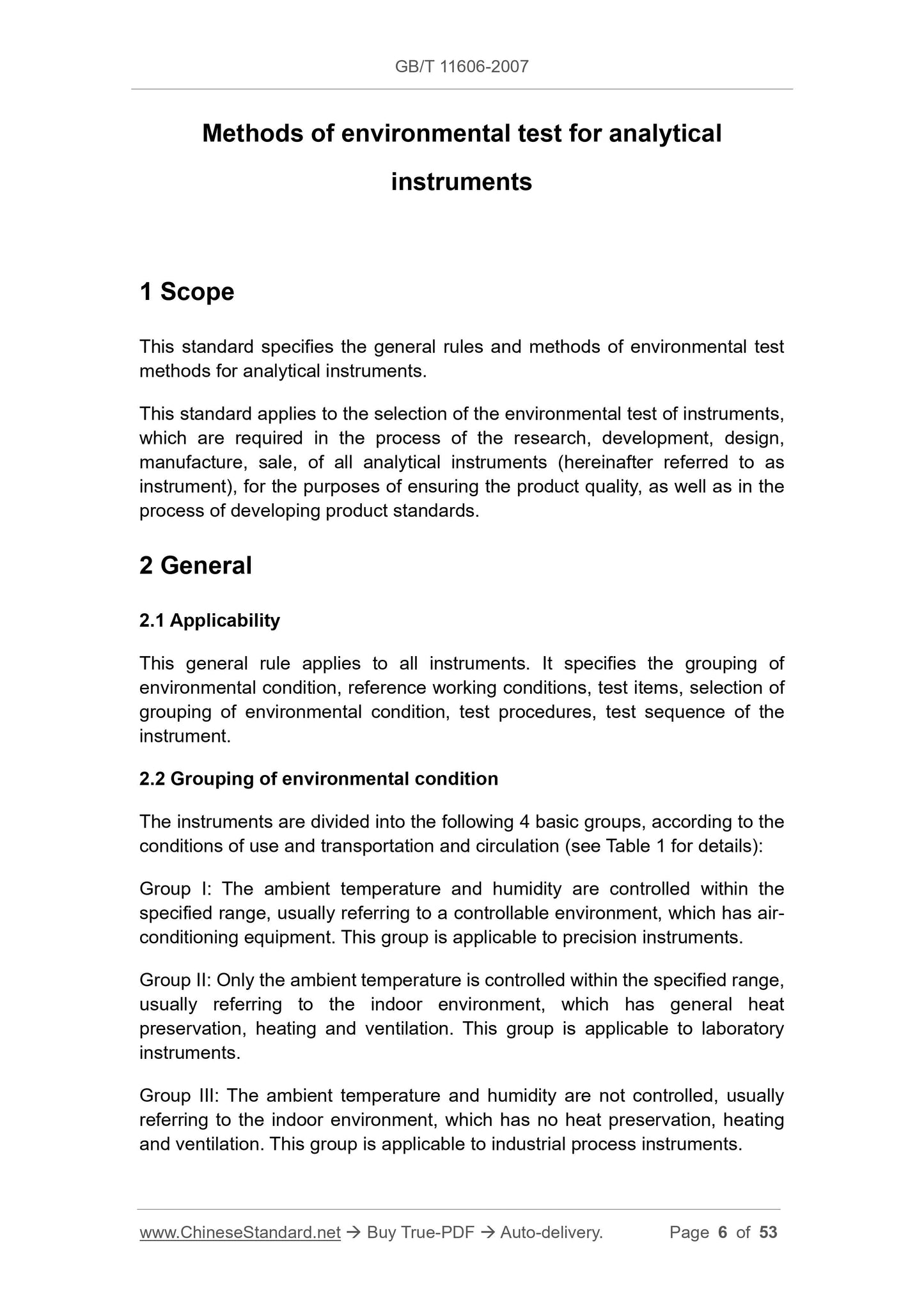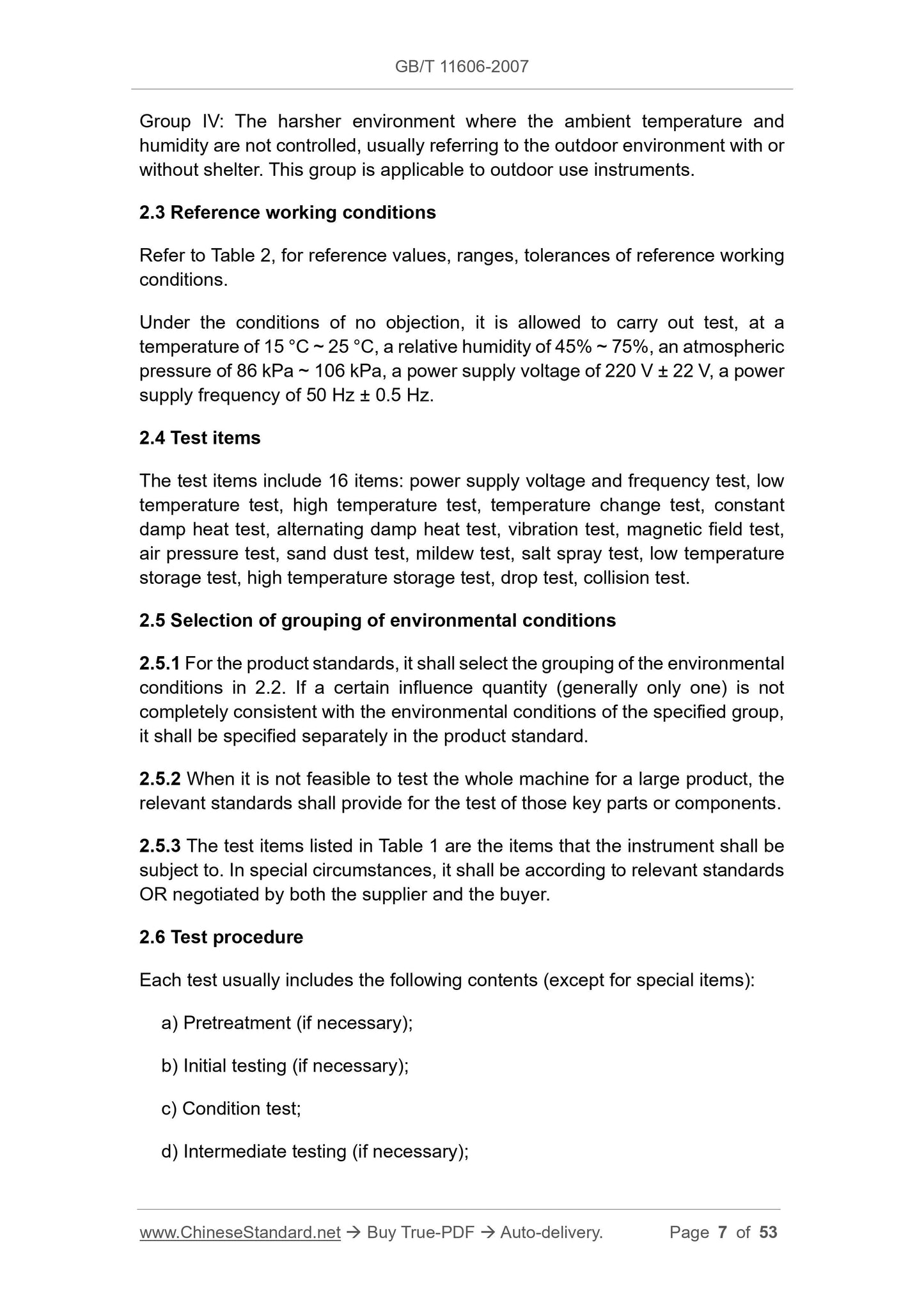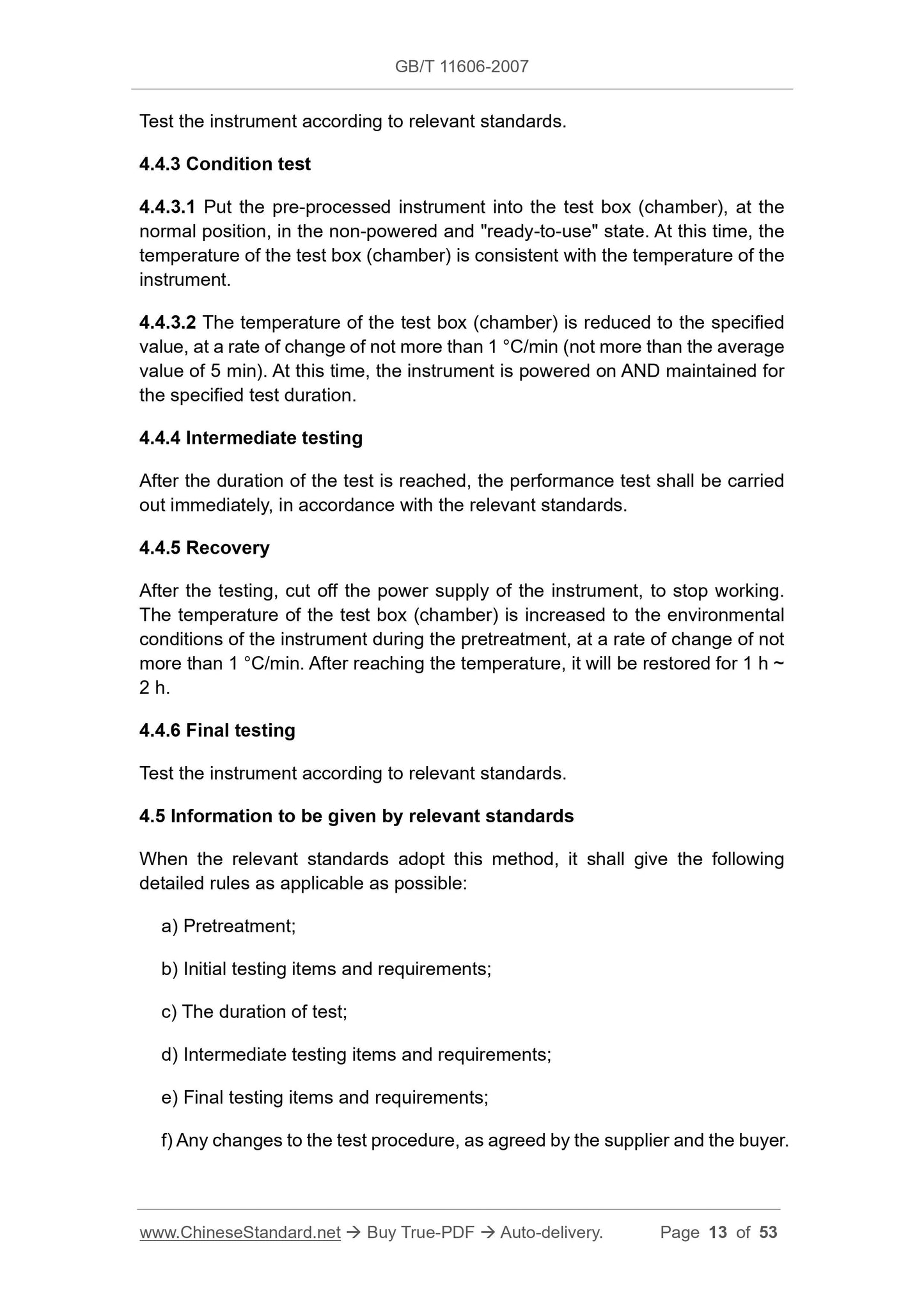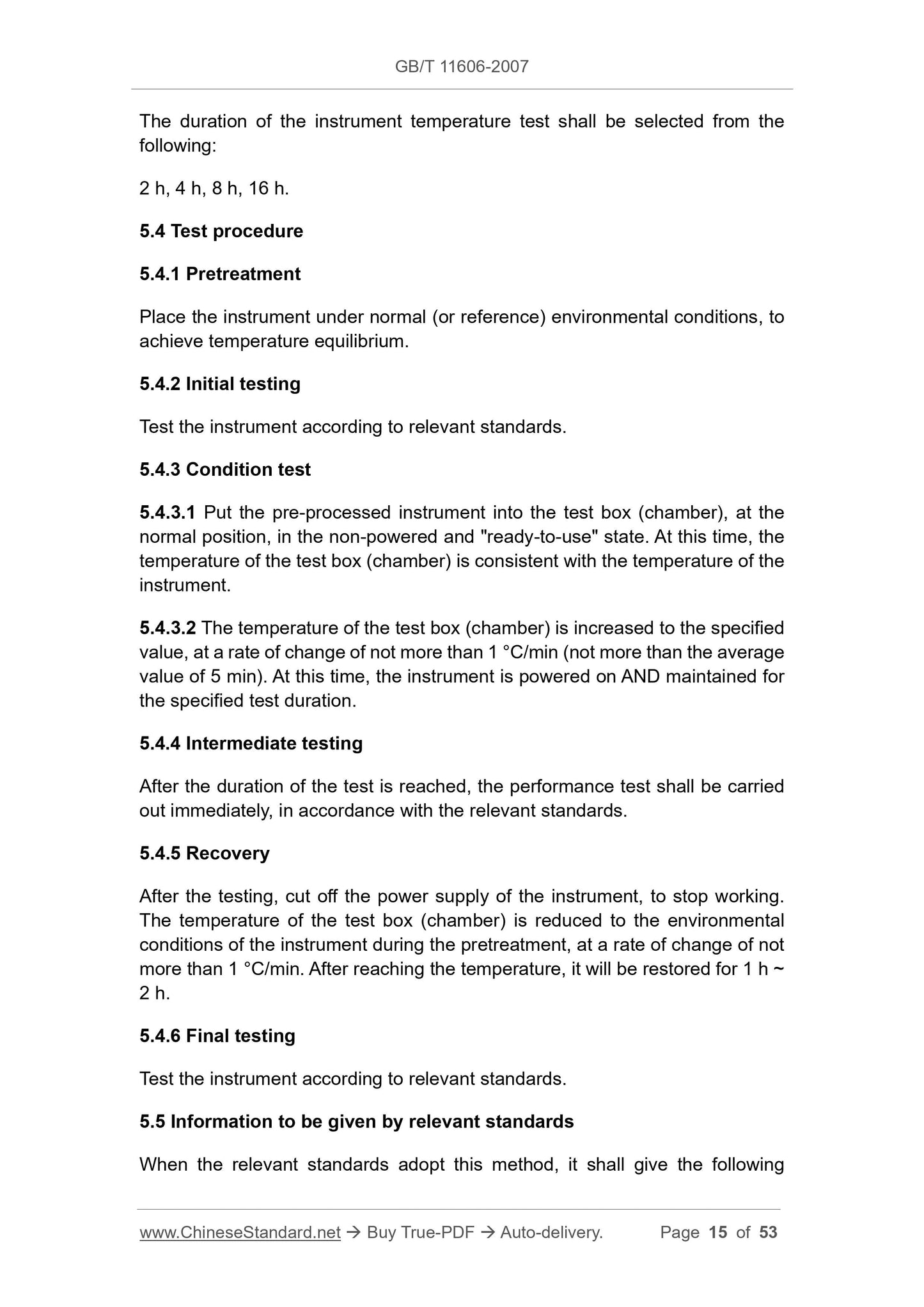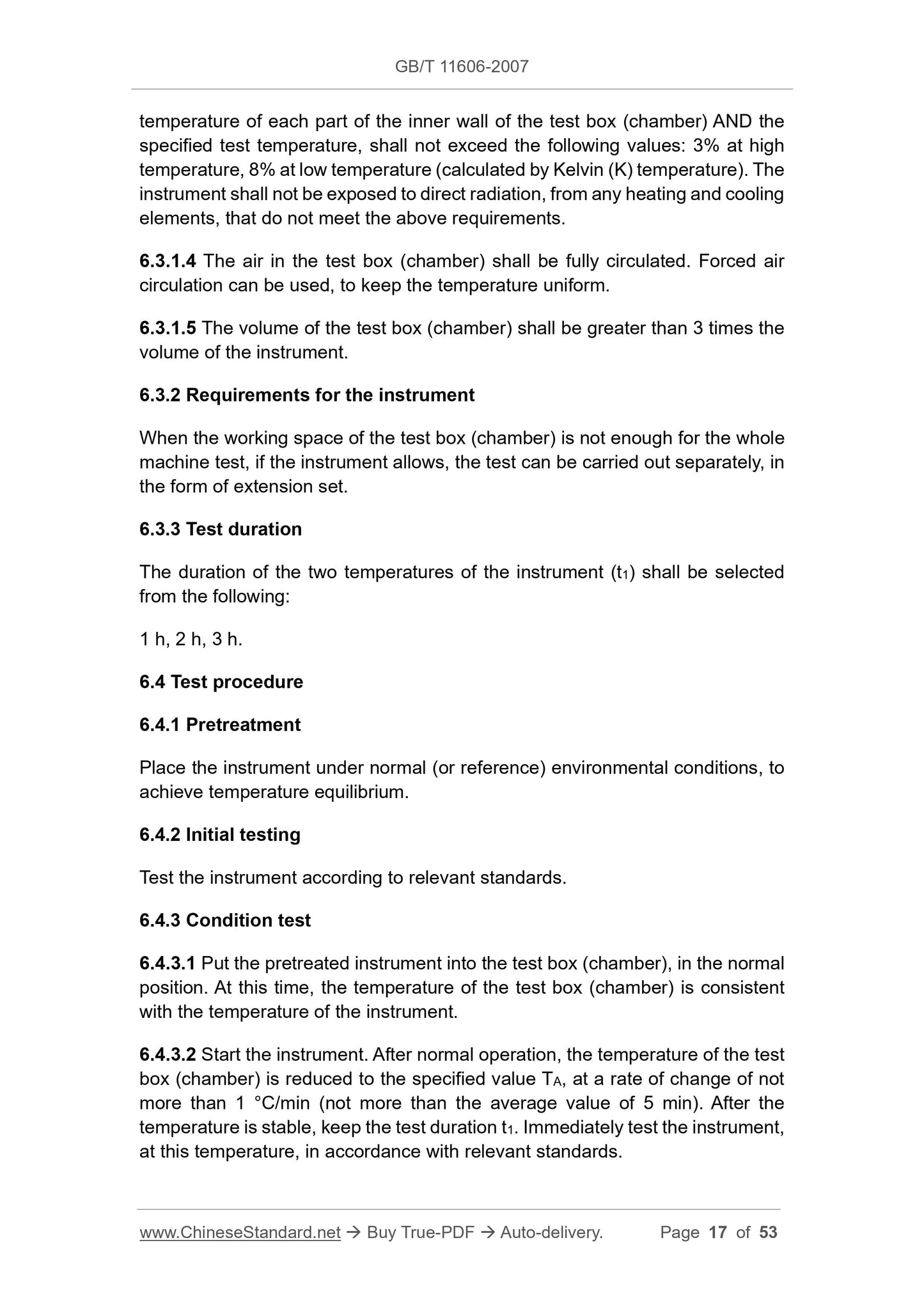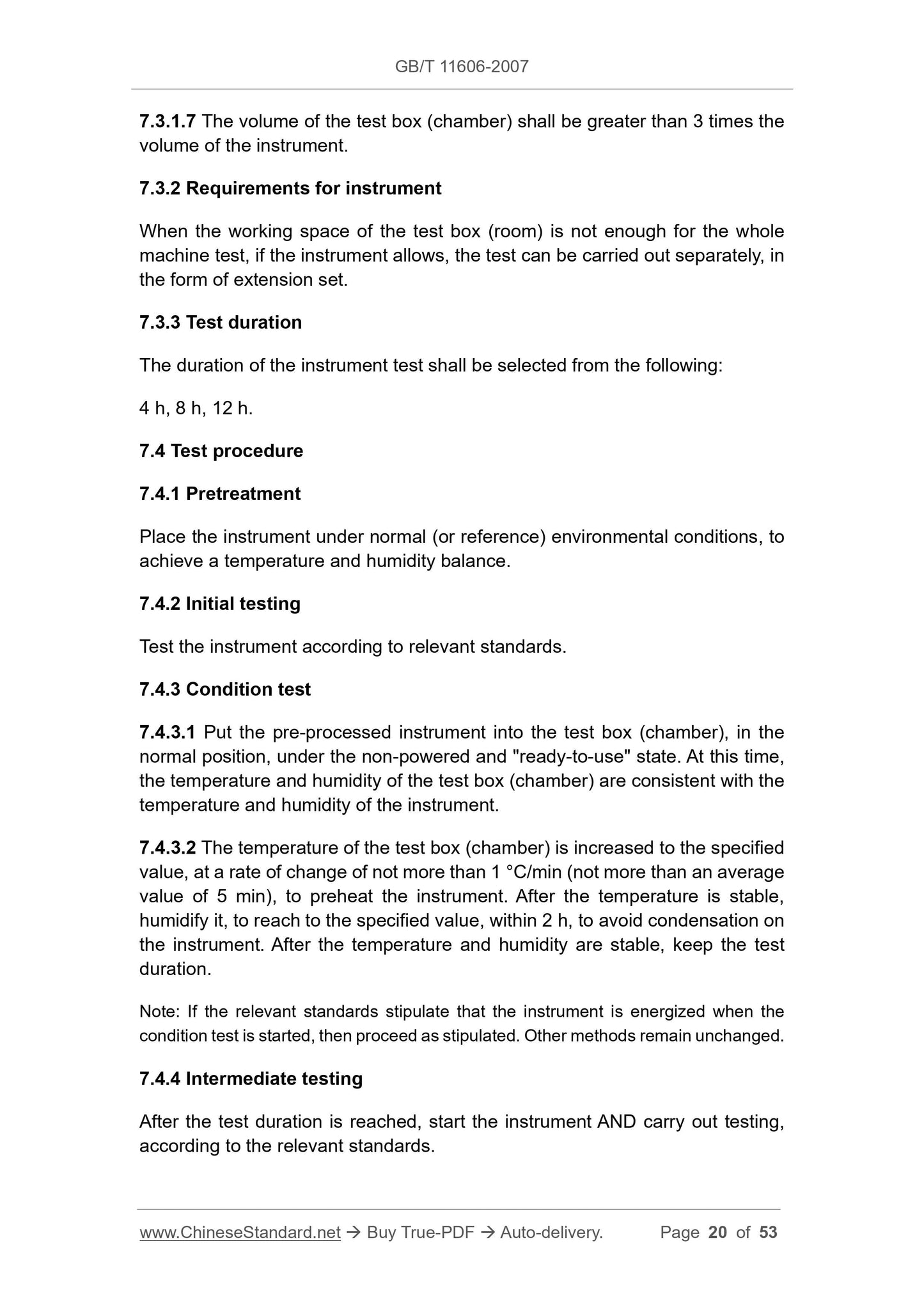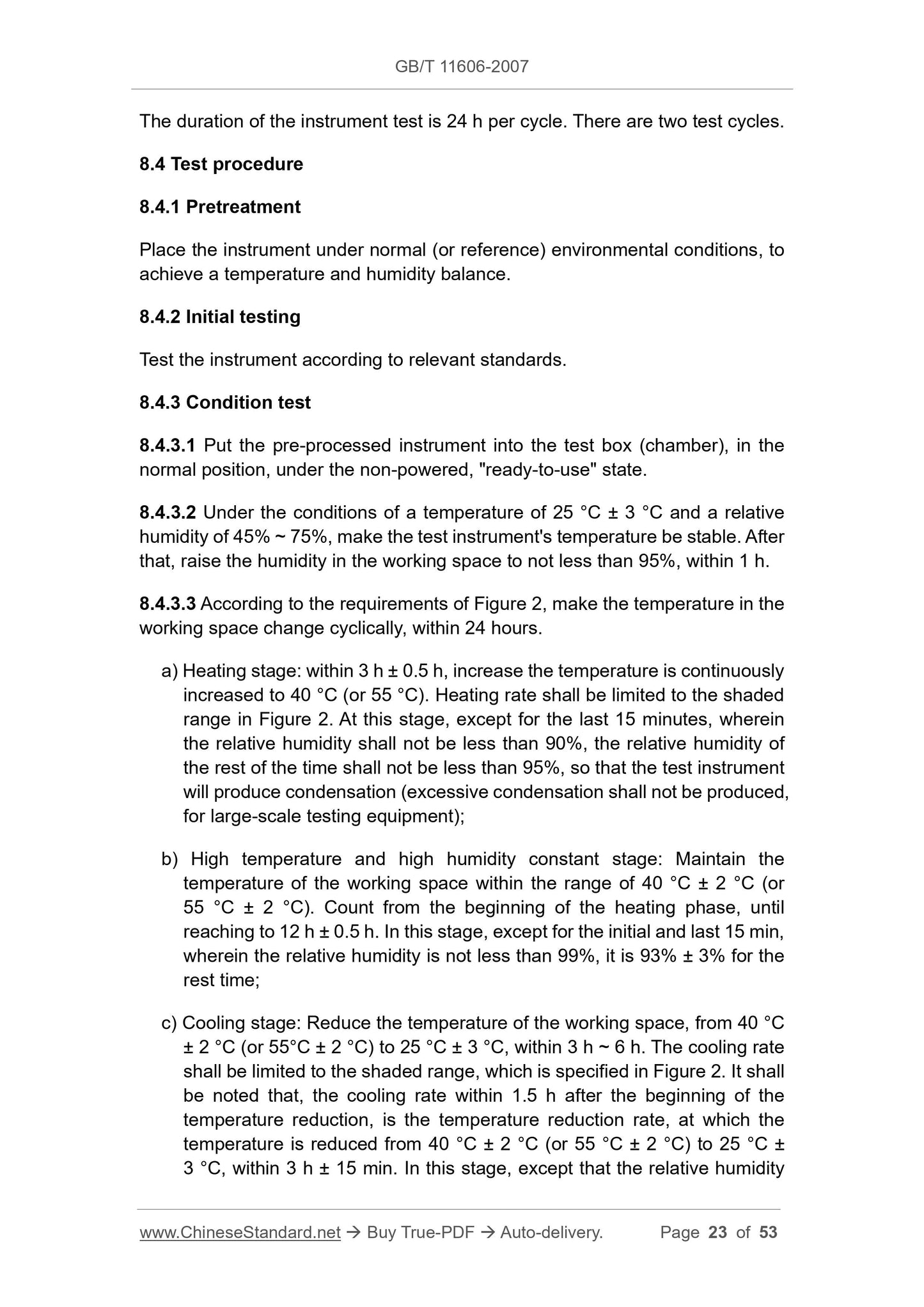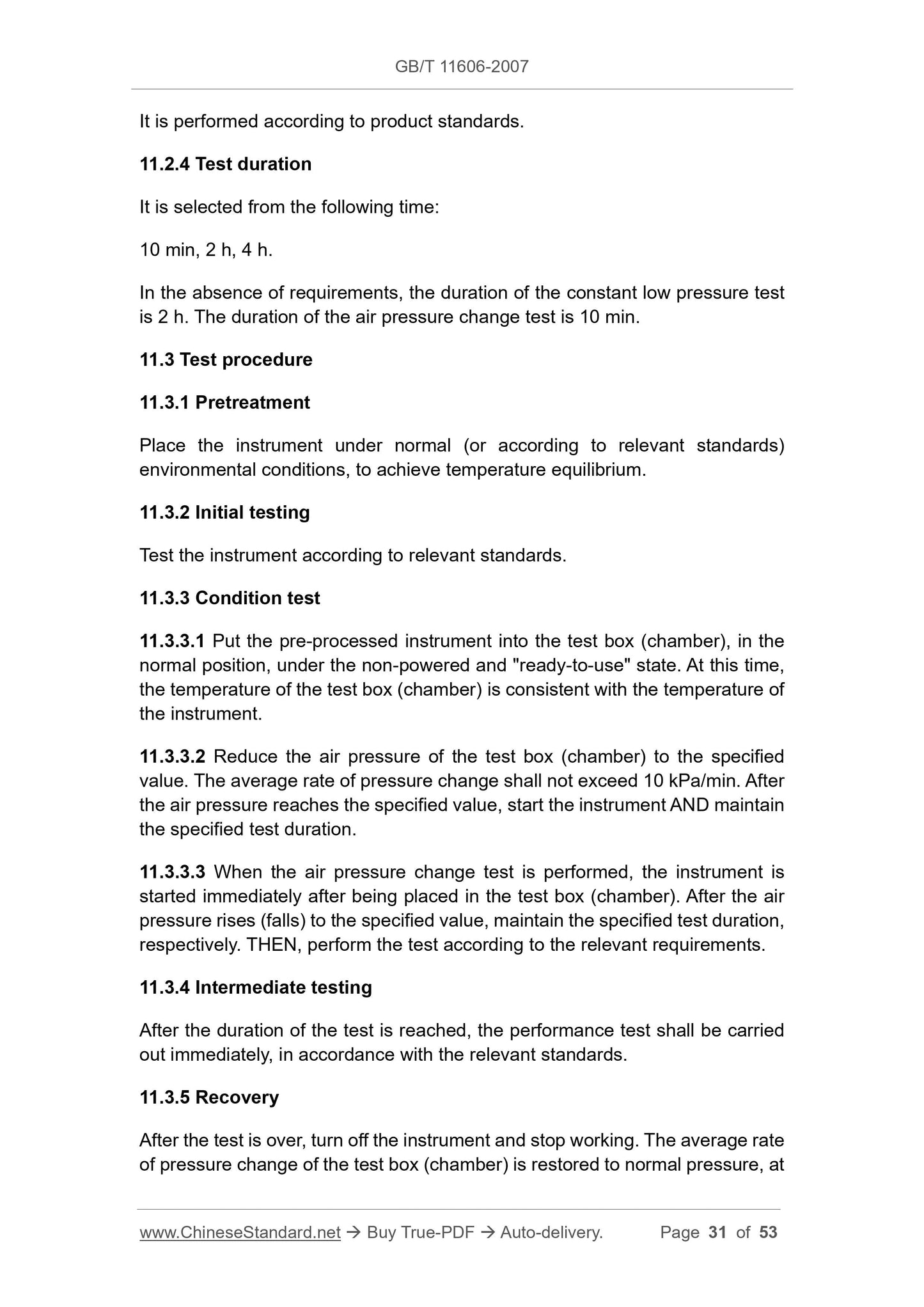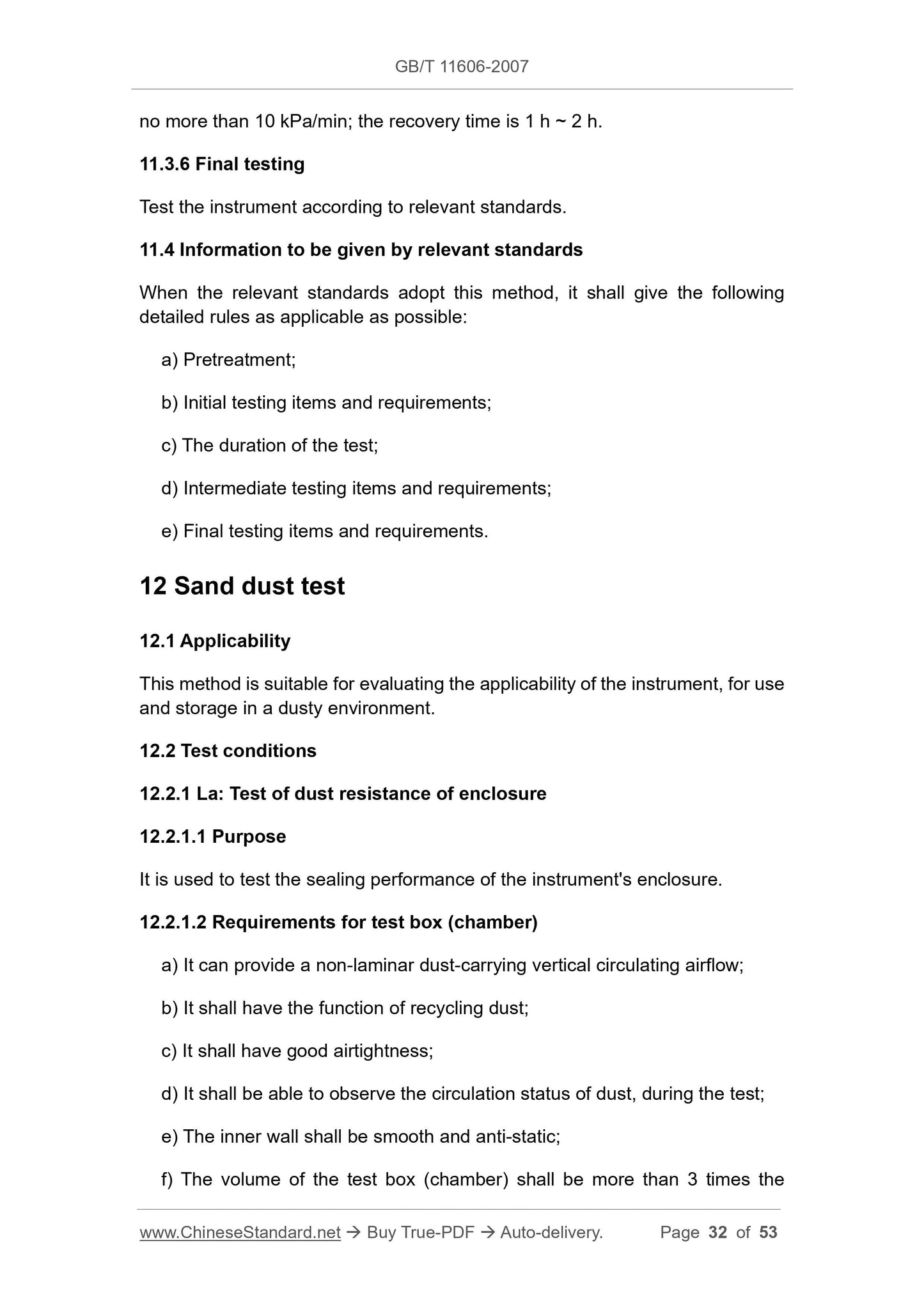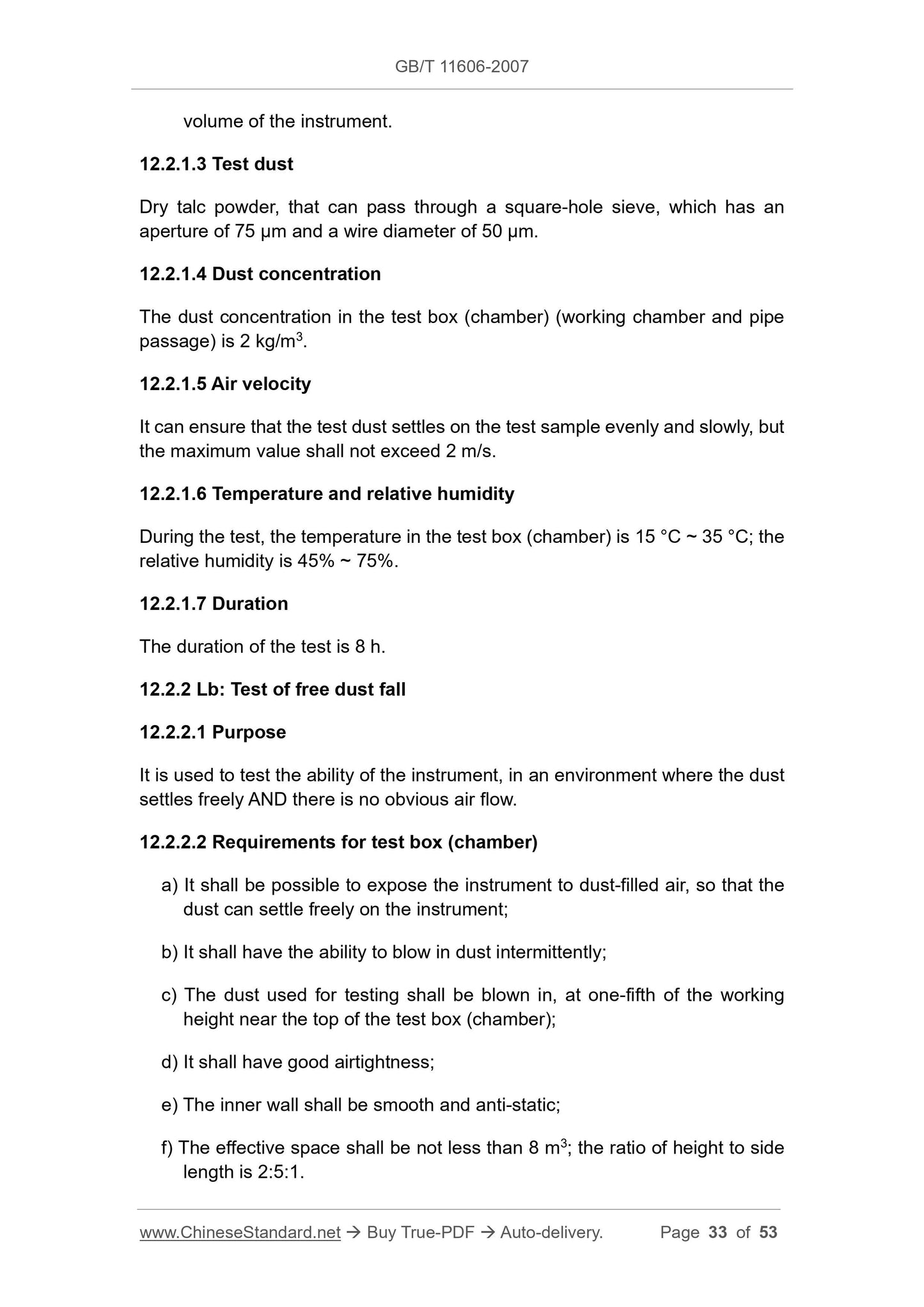1
/
of
12
www.ChineseStandard.us -- Field Test Asia Pte. Ltd.
GB/T 11606-2007 English PDF (GB/T11606-2007)
GB/T 11606-2007 English PDF (GB/T11606-2007)
Regular price
$460.00
Regular price
Sale price
$460.00
Unit price
/
per
Shipping calculated at checkout.
Couldn't load pickup availability
GB/T 11606-2007: Methods of environmental test for analytical instruments
Delivery: 9 seconds. Download (and Email) true-PDF + Invoice.Get Quotation: Click GB/T 11606-2007 (Self-service in 1-minute)
Newer / historical versions: GB/T 11606-2007
Preview True-PDF
Scope
This standard specifies the general rules and methods of environmental testmethods for analytical instruments.
This standard applies to the selection of the environmental test of instruments,
which are required in the process of the research, development, design,
manufacture, sale, of all analytical instruments (hereinafter referred to as
instrument), for the purposes of ensuring the product quality, as well as in the
process of developing product standards.
Basic Data
| Standard ID | GB/T 11606-2007 (GB/T11606-2007) |
| Description (Translated English) | Methods of environmental test for analytical instruments |
| Sector / Industry | National Standard (Recommended) |
| Classification of Chinese Standard | N50 |
| Classification of International Standard | 19.040 |
| Word Count Estimation | 31,330 |
| Date of Issue | 2007-10-11 |
| Date of Implementation | 2007-12-01 |
| Older Standard (superseded by this standard) | GB/T 11606.1-1989; GB/T 11606.2-1989; GB/T 11606.3-1989; GB/T 11606.4-1989; GB/T 11606.5-1989; GB/T 11606.6-1989; GB/T 11606.7-1989; GB/T 11606.8-1989; GB/T 11606.9-1989; GB/T 11606.10-1989; GB/T 11606.11-1989; GB/T 11606.12-1989; GB/T 11606.13-1989; GB/T 11606.14-1989; GB/T 11606.15-1989; GB/T 11606.16-1989; GB/T 11606.17-1989 |
| Quoted Standard | GB/T 11606.10-1989; GB/T 11606.1-1989; GB/T 11606.11-1989; GB/T 11606.12-1989; GB/T 11606.13-1989; GB/T 11606.14-1989; GB/T 11606.15-1989; GB/T 11606.16-1989; GB/T 11606.17-1989; GB/T 11606.2-1989; GB/T 11606.3-1989; GB/T 11606.4-1989; GB/T 11606.5-1989; GB/T 11606.6-1989; GB/T 11606.7-1989; GB/T 11606.8-1989; GB/T 11606.9-1989 |
| Regulation (derived from) | China Announcement of Newly Approved National Standards No. 11 of 2007 (total 111) |
| Issuing agency(ies) | General Administration of Quality Supervision, Inspection and Quarantine of the People's Republic of China, Standardization Administration of the People's Republic of China |
| Summary | This standard specifies test methods for environmental analytical instruments and methods of General. This standard applies to all analytical instruments (hereinafter referred to as the instrument) in research, development, design, manufacturing, sales process, to ensure product quality and to develop product standards, environmental test equipment required choice. |
Share
